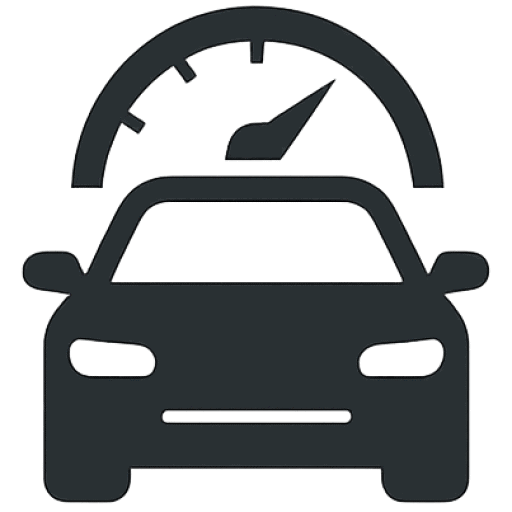Tech features, fundamentals
A few years ago, my car battery died in a grocery store parking lot—no jumper cables, no kind stranger nearby, just me and the quiet dread of needing to call roadside assistance. That was the day I swore I’d never be caught without a portable jump starter again. But here’s the thing: a lot of older jump starters are bulky, slow to recharge, and use outdated charging ports.

That’s why I’ve been on a mission to find portable jump starters that recharge via USB-C—because if you’re already living in a USB-C world, you shouldn’t need to carry a separate charging cable just for emergency gear.
Why USB-C Jump Starters Are Better
USB-C isn’t just a nice-to-have—it’s the new standard. Most modern laptops, Android phones, tablets, and even MacBooks use USB-C, which means fewer cords to carry and faster charging speeds. A USB-C rechargeable jump starter:

- Charges faster than micro-USB models
- Can often be charged via your laptop, wall brick, or car outlet
- Reduces clutter in your glove box or trunk
- Is compatible with power banks and solar chargers
If you’re already streamlining your gear, it only makes sense to have a jump starter that’s just as modern.
Must-Have Features (Besides USB-C)
While USB-C is the focus here, you still want a device that does its core job well. I looked for these specific features in jump starters that also happen to use USB-C:

- Peak amps: At least 1,000A for reliable starting, especially in cold weather
- Battery capacity: 10,000mAh or more means it doubles as a decent power bank
- Safety features: Reverse-polarity protection, spark-proof clamps, and short-circuit protection
- Extras: Built-in flashlight, LCD display, or even a 12V port for inflators
My Top Picks
Here’s a quick comparison of the best USB-C charging jump starters I tested or researched thoroughly. These are all under $150 and compact enough to live in your glove box or under a seat:
| Product | Peak Amps | USB-C Charging | Other Ports | Extras | Price |
|---|---|---|---|---|---|
| NOCO Boost X GBX45 | 1,250A | ✅ 60W USB-C In/Out | USB-A, 12V | Flashlight, IP65, 6L gas/3L diesel | ~$129 |
| Fanttik T8 Apex 2000A | 2,000A | ✅ USB-C PD 65W | USB-A, 12V | LCD Screen, Flashlight, Carry Case | ~$119 |
| Hulkman Alpha 85S | 2,000A | ✅ 65W USB-C In/Out | USB-A, DC port | IP65, Fast recharge in <1hr | ~$119 |
| TOPDON JUMPSTARTER JS3000 | 3,000A | ✅ USB-C | USB-A, 12V | Heavy-duty clamps, temp sensor | ~$139 |
What I Use: Fanttik T8 Apex
I personally keep the Fanttik T8 Apex in my trunk. It has a clean LCD interface, charges fast with USB-C, and doubles as a surprisingly effective power bank. I used it on a friend’s 4Runner with a dead battery, and it fired up instantly even in the cold. The clamps feel solid and it comes in a nice little case that doesn’t slide around.
It also fast-charges my MacBook when I’m in a pinch—which has saved me more times than I want to admit.
What to Avoid
Some companies advertise USB-C on their jump starters, but don’t be fooled—it’s often input only, and at slow wattages like 10W or 15W. For meaningful performance, look for USB-C Power Delivery (PD) rated at at least 45W.
Also watch out for knockoffs that look like name brands on Amazon but don’t come with real safety certifications. You don’t want a device full of lithium-ion cells blowing up under your passenger seat.
Charging Times
Here’s what you can generally expect if you’re using USB-C to charge your jump starter:

- 65W USB-C PD charger: Full charge in 1–1.5 hours
- MacBook charger (61W): Usually fine and fairly quick
- 20W phone charger: Works, but can take up to 4–5 hours
- Car USB-C outlet: Okay for topping off, not great for full recharges
You Might Also Be Interested In:
- [Best Portable EV Chargers Under $150]
- [Top Car Accessories for Long Road Trips]
- [How to Prep Your Car for Monsoon Rains in SoCal]
- [Best Trunk Organizers for SUVs in 2025]

Final Thoughts
Having a USB-C rechargeable jump starter is just one of those smart moves you’ll thank yourself for later. Whether you’re commuting every day, going off-grid, or just want to be prepared without clutter, these updated models make life easier. I genuinely don’t miss the bulkier units with proprietary wall chargers—and once you switch, you probably won’t either.
If you’ve got a glove box and $100, there’s no reason to still be waiting on a tow truck.
Let’s Talk Cars
Have a question? A suggestion? Just want to say hi?
You’re in the right place.
Use the form below to reach out to the AutoSpecs Daily team. We're happy to hear from readers, car lovers, first-time buyers, and anyone who's got something to share.
What can you contact us about?
- Feedback on one of our articles
- Ideas for new topics you'd like us to cover
- Questions about cars, gear, or general auto advice
- Media, partnership, or brand inquiries
- Anything else that's on your mind
We check every message that comes through and do our best to respond within 2 to 3 business days.
We don’t list an email address here to avoid spam, but the contact form is the best and fastest way to reach us.
Thanks for stopping by. We're glad you're here.

